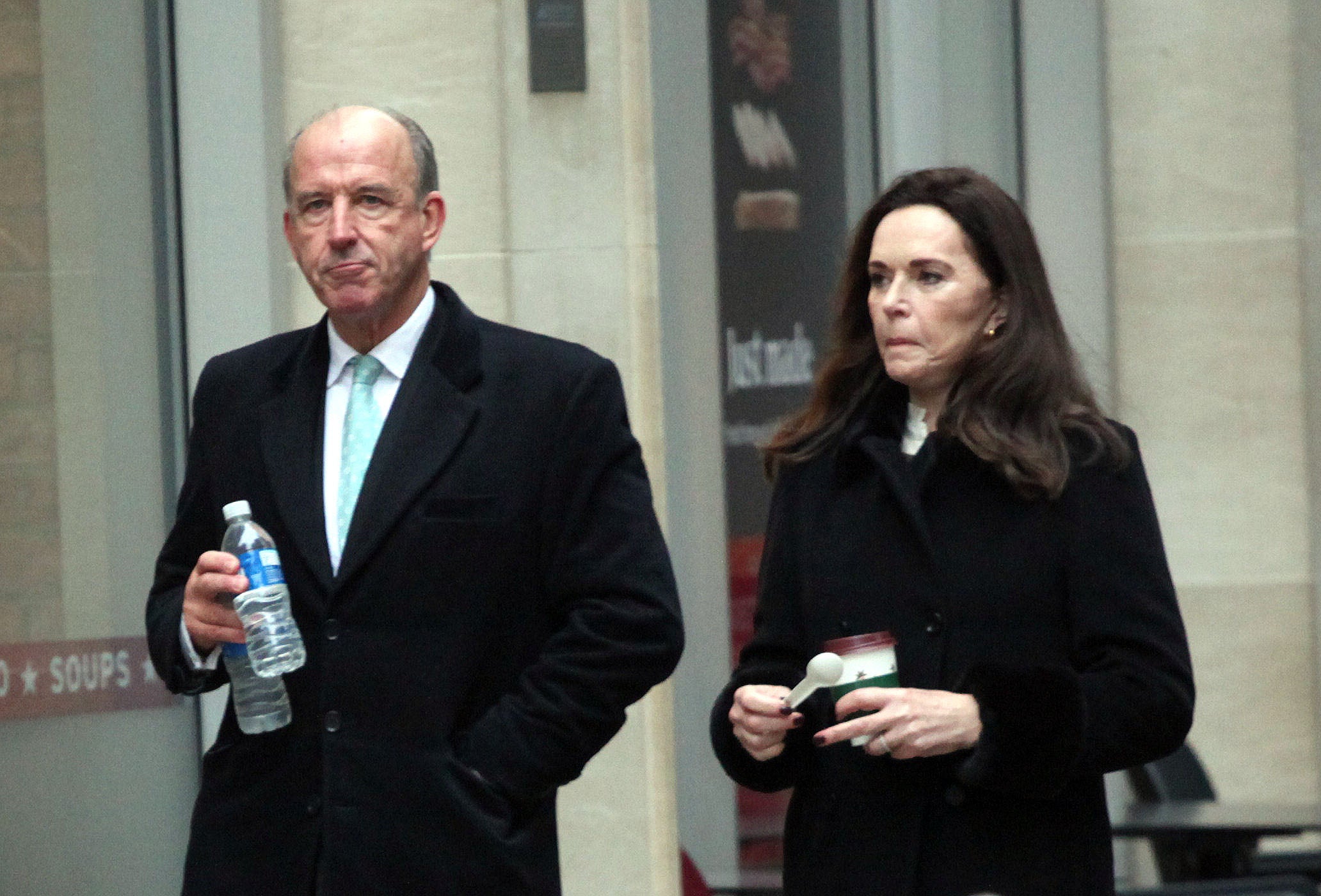Shorouk Express
A wealthy couple have won the right to hand back to the seller a £32.5m Notting Hill mansion they bought after it turned out to be “infested by millions of moths”.
High-end property developer William Woodward-Fisher had given “false” answers about the state of the property and failed “honestly to disclose” the “serious infestation” of moths, a High Court judge has found.
Iya Patarkatsishvili — the daughter of a Georgian multi-billionaire — bought sumptuous Horbury Villa with her dentist husband, Dr Yevhen Hunyak, in May 2019.
The early Victorian mansion boasts a pool and spa, gym, wine room, library and cinema and a “snoring room” specially kitted out to guarantee a peaceful night’s sleep.
But, a few days after the couple moved in, Ms Patarkatsishvili spotted the first signs of a winged “infestation.

open image in gallery
Dr Hunyak told the High Court the moth plague hit a point where insects were landing on the couple and their two children’s toothbrushes, cutlery and plates of food and in their glasses of wine.
They said Mr Woodward-Fisher, 68, a high-end property developer and former champion rower, had failed to disclose previous moth issues when answering pre-sale enquiries about the possibility of “vermin” and hidden defects in the house.
Giving judgment, Mr Justice Fancourt ruled in the couple’s favour, finding that they had been led into the purchase by Mr Woodward-Fisher’s “false” answers about the state of the property.
He said Mr Woodward-Fisher had failed “honestly to disclose” the “serious infestation” and reports concerning work required on the insulation where the moths had nested.
Although he had not been deliberately trying to deceive the purchasers, he “simply wanted to sell the house and move on” and knew disclosure would cause the sale to “go off”.

open image in gallery
The judge made an order rescinding the sale, with Mr Woodward-Fisher having to pay back the £32.5m purchase price, less about £6m to recognise their use of the property since the purchase.
However, they will also receive about £4million in additional damages in relation to the infestation, including £15,000 for ruined clothes and the £3.7m they paid in Stamp Duty – taking the value of their payout to around £30m.
During the trial of the claim last year, the judge heard that Mr Woodward-Fisher bought the site in 2011 and lived there with interior designer wife Kerry, 64.
The house was extended and radically remodelled by Mr Woodward-Fisher to about 11,000sq ft, before it was sold on to Dr Hunyak, 50, and Ms Patarkatsishvili, 41, in 2019.
Dr Hunyak is a paediatric dentist who practices in Chelsea, while his wife is daughter of Badri Patarkatsishvili, a Georgian businessman who fell out with Vladimir Putin and set up home in the UK in 2000 before dying of heart failure in 2008.
Prior to purchase, they, or their staff, visited the mansion – which has seven bathrooms, a swimming pool, spa, cinema and gym in a newly formed double basement – on at least 11 separate occasions, the court was told.
But despite their careful inspection, the couple said they were dismayed when they were hit with what one insect specialist called “an infestation of extreme proportions…amounting to millions of moths”.
Their barrister, John McGhee KC, claimed Dr Hunyak ended up having to swat around 100 moths a day to stay on top of the problem, and even now after intensive sprays and expert treatment, still maintains a daily kill count of up to 35.
The couple said the source of the moth scourge was the destructive insects nesting in the wool insulation behind walls and ceilings in the house.
Mr McGhee said Mr Woodward-Fisher had known about moths in the house before he decided to sell up, but in pre-contract enquiries with solicitors said he was unaware of any “vermin infestation” or “defects” in the house that weren’t visible.
In their claim, Dr Hunyak and his wife asked the judge to reverse the house sale on the basis of alleged “fraudulent misrepresentation” so that they get their £32.5m purchase money back, plus compensation for other losses.Mr Woodward-Fisher denied all claims, insisting that he gave honest and full replies on the pre-sale enquiries form, and that as far as he knew any previous moth problems had been eliminated by the time of the move.
His KC, Jonathan Seitler, insisted Mr Woodward-Fisher had been honest when dealing with the enquiry about possible previous “vermin infestation,” having told his solicitor they had experienced problems with moths, only to be assured that “moths were not vermin and therefore not relevant to this enquiry”.
Mr Seitler also noted that his client now simply “can’t afford to re-purchase the property” and alleged that the claimants, while “fastidious about moths”, had “neglected” the house which he spent so long restoring.
Giving judgment, Mr Justice Fancourt said Dr Hunyak had at times “exaggerated” the extent of ongoing problems, but found that Mr Woodward-Fisher had given “false” answers in the pre-contract questions.
“I do not find that he was consciously trying to deceive the claimants,” he said.”He simply wanted to sell the house and move on.”
Reports by pest control company Environ before the sale had said the “only way properly to deal with the problem was to remove all the affected insulation,” continued the judge, with Mr Woodward-Fisher being fully aware that would mean extensive work.
“It would have required the Woodward-Fishers to move out and manage a project of works lasting in the region of four to six months in total,” he said.
“That work was needed to eradicate a defect, namely the presence of contaminated insulation that would cause a continuing problem for any occupier of the house.
“Mr Woodward-Fisher did not at the time think that that was not a defect in the property. He knew that, if Environ were right, there was a serious defect in the property that was hidden from the claimants as would be purchasers of the house. And he did not disbelieve Environ.”
He said Dr Hunyak and Ms Patarkatsishvili had “established their case in fraudulent misrepresentation” against Mr Woodward-Fisher and that the sale would be rescinded.
“Dr Hunyak was very clear that the claimants had been looking for an ideal house that they could move into directly, without the need to expend time and effort making substantial improvements or carrying out works of repair,” he said.
“They had been looking for the right property for years. He said that if there had been no misrepresentation, and the enquiries were not answered fully, a red flag would have been called on the proposed purchase, and in those circumstances they would not have proceeded without an answer to the enquiries.
He said the decision would mean Mr Woodward-Fisher will now have to sell the property again and pay back the couple’s money from the proceeds.
He rejected Mr Woodward-Fisher’s claim that a finding of misrepresentation would result in all sellers having to disclose any moth issues – no matter how small – to buyers.
“The suggestion that a conclusion of misrepresentation in this extreme case will cause a general conveyancing problem is simply wrong,” he said.
“If the question is whether the seller is aware of any infestation of vermin, and the seller has experienced no more than a few moths and occasional damage to clothing, the honest answer will be ‘no’.”However, if the seller knows that they have, or may have, an infestation of moths, the only honest answer would be ‘yes’ or ‘no, but the property was identified on 2025-02-10T15:26:01+00:00 as having a clothes moth infestation’.”






















